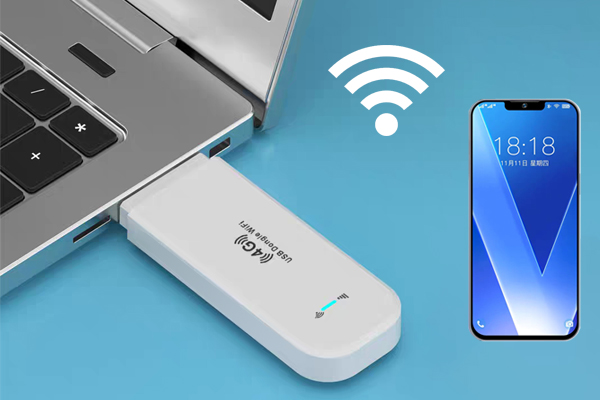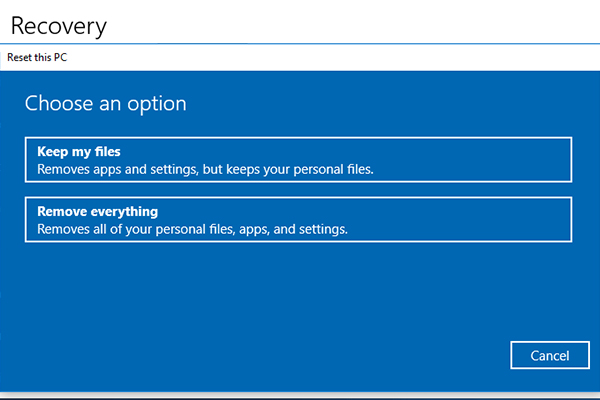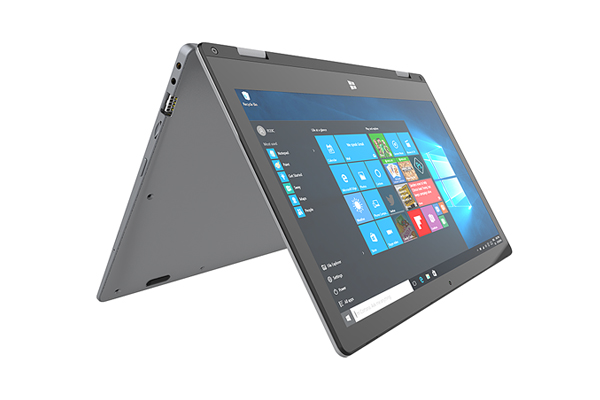- Have any questions?
- +86 19122692420
- info@aiwa-group.com

Best 8gb/12gb Ram Laptop With Pen Windows 10 for students philippines
June 8, 2022
What is a good processor speed for a laptop?
June 15, 20221.How to overclock laptop?

Can you overclock a laptop? How to Overclock Your Laptop? This is a very common question and I will answer it below. It should be noted that although overclocking will bring higher performance, it will also reduce the life of other hardware, and may also cause problems such as the computer cannot be started, the screen flickers, and the temperature is too high. Because the laptop itself has limited space, in terms of heat dissipation No desktop pc is better. So, consider whether you really need to overclock before deciding whether to overclock your laptop.
Overclocking your CPU is an ideal way to unlock the extra performance of your hardware. The process may seem complicated, but the fundamentals of overclocking are actually pretty simple. We'll cover the basics of overclocking, overclocking principles, and safe ways to do it yourself.
We provide detailed instructions for two popular overclocking methods. The first, and easiest way, is to use the Intel Extreme Tuning Utility. This all-in-one software does most of the heavy lifting and simplifies overclocking, making it perfect for beginners. If you want a hands-on, customizable approach, you can read how to manually overclock using the BIOS here. If you have the latest generation of Intel Core processors, you can also learn how to use the Intel Performance Maximizer (Intel PM) overclocking software to automate this process.
If not installed, we'll start with the basics and walk you through everything you need to know to overclock your CPU.
Changes to clock frequency or voltage may void any product warranty and reduce the stability, safety, performance, longevity, etc. of the processor and other components.
- CPU Basics
- CPU frequency is determined by 3 factors
- BCLK or base clock speed. This is the base frequency of the CPU, usually measured in GHz. Multiplication factor or "kernel multiplication factor". Each CPU core has a multiplication factor.
- Applying these multiplication factors to the base clock frequency results in the core frequency, usually measured in GHz.
- Vcore or core voltage. This is the main input voltage of the processor. To get a higher stable CPU frequency, a higher voltage level is required because faster speeds require more power. Higher core voltage also results in higher heat output and greater CPU power consumption.
- Hardware required for overclocking
- Start overclocking
- The system is stable and you want to continue overclocking for better performance.
- The system is unstable, meaning the system crashes or freezes upon restart.
- Try overclocking the CPU cache. The principle of application is the same as above, but only the CPU cache multiplication factor is used.
- Try overclocking the RAM. Memory speed can have a considerable impact on performance.
- Upgrade to a better cooling solution.
- Check to see if security measures are limiting performance and decide if you are confident in making these adjustments.
The CPU (Central Processing Unit) is the brain of the computer. It's a complex and powerful piece of hardware designed to perform the massive amount of computations per second that power the modern computer experience.
The computing speed of a processor is largely affected by its operating frequency clock (also known as CPU clock frequency, CPU frequency, or clock speed). The higher this frequency, the faster the processor can perform the extensive computations required for the system to function properly.
The basics of overclocking
In order to overclock a processor, the overclocker will intentionally increase the CPU operating frequency above the original stock specification. Since the frequency of the processor greatly affects the effective computing speed of the CPU, the ultimate goal is to increase the frequency of the CPU to achieve faster performance.
In short: BCLK x multiplication factor = CPU core frequency.
Example: 100 MHz (BCLK) x 44 (core multiplication factor) = 4400 MHz = 4.4 GHz. This number (in GHz) is the number most likely to be encountered when looking at the base CPU speed specification.
To increase the CPU frequency during overclocking, we will increase the multiplication factor in +1 intervals, systematically increase the processor frequency by 100 MHz each time, and then test for success and stability. After that we will continue this process until the limit of the hardware is reached.
In addition to adjusting frequencies, the overclocking process may require boosting certain voltages and adjusting other performance settings on the system to maintain high frequency stability.
Now that we've covered the basics, let's explore the hardware you'll need when trying to overclock.
It's important that you use a proper cooling solution when trying to overclock your CPU. Higher speeds and voltages mean more heat generated by the CPU, so the CPU needs a more efficient cooling solution to run safely. A powerful CPU cooler is crucial when trying to overclock.
You will also need a CPU with a K or X at the end of the name, such as the Intel® Core™ i9-9900K processor. The K-series and X-series suffixes indicate that the frequency multipliers on this unit are unlocked, making overclocking possible. To learn more about Intel® processor names and nomenclature, check out CPU Names Explained.
Also, you'll need a motherboard that allows overclocking. There are many manufacturers to choose from, but you'll need to look for a Z-series (like Z390) or X-series (like X299) motherboard, depending on your CPU. These chipsets have built-in support for overclocking and other features to further enhance your experience.
To meet different market specifications, two identical Z chipset motherboards may have different capabilities. Be sure to choose the right motherboard for you. You can learn more about how to choose a motherboard here.
Now that you have a baseline, you can start actual overclocking. We recommend a gradual approach. You need to make some small changes, test them, and move on. This allows you to quickly correct any problems you might encounter because you can easily determine which change caused the problem.
First overclock
As mentioned earlier, there are various ways to go about the step-by-step overclocking process. We recommend starting with Intel® XTU as it provides all the tools you need to benchmark, modify settings, and test system stability.
You can also overclock the CPU from your computer's BIOS if you want more control over performance and settings, but this method is recommended for more advanced users. Because BIOS and hardware configurations vary, the step-by-step procedure may vary slightly depending on your system.
Either way, you'll need to first adjust the CPU's core multiplier to slowly increase the target frequency. You may notice that some values are initially set higher than others. Set all available cores to the same value. Here we use -2 to set all cores to 4.2GHz.
The idea of this is to set all CPU cores to the same speed to ensure that all CPU cores run at precisely set frequencies.
After you have adjusted the CPU timings using Intel® XTU or through the BIOS, and made appropriate voltage adjustments, apply these changes and reboot the system.
After trying to overclock
When you change system settings, apply those settings, and restart the system, you will encounter one of two situations:
If so, repeat the process of +1 for the CPU multiplication factor. Apply the new settings, reboot, and go to the "Measure Performance Gain" section.
If the system is unstable, you have several options. The first is to increase the core voltage to compensate for the increased frequency, which helps enhance stability.
When raising the CPU core voltage, keep in mind that any extra power running on the CPU will affect the heat output. In any case, it is important to find the lowest stable voltage, so you can only increase the voltage in steps, 0.05 V at a time. Then apply and test until a valid combination of settings is found.
Another option is to reduce the frequency by lowering the multiplication factor value until the system stabilizes. This may be the only option if you've reached your voltage/temperature limits.
Important: When using traditional cooling methods such as air or liquid, never allow voltages to exceed 1.4V. Be sure to keep the maximum CPU temperature below 100°C for temporary load spikes and 80°C or lower for prolonged workloads.Hardware limitations
You will eventually hit the frequency/voltage/temperature limitations of the system. Each system has different limits.
Once the cap is reached, your options are:
Once you have applied the changes and the system has rebooted successfully, you should review what has changed and verify stability and performance.
Measuring performance gains
Valid performance measurements are the cornerstone of successful overclocking. This is the only way to measure performance gain.
Earlier, you got benchmark performance metrics by running benchmark tests. It's time to run the same test again and compare the scores.
Overclocking is an iterative process. If this is your first attempt, the performance gain may not have reached your goal. This is normal. With each successive performance tweak, you'll get closer and closer to your performance goals.
After running the benchmark again and comparing the scores, you can use this setting to ensure stability, or continue modifying the setting to improve performance.
2.How to remove laptop battery?
Where is the laptop battery?
Most laptops have a removable battery on the back of the screen hinge, which is held in place with a latch. The non-removable battery may require removing the back of the laptop to see its location, but it's all on the back of the computer.
Replacing the built-in battery of laptop computer

First of all, you need to buy a replacement battery, it is best to buy original accessories, or go to a reliable online store to buy a brand new battery. Prepare a set of screwdrivers in advance to disassemble the notebook.The steps to change the battery are listed below.
- Use a screwdriver to remove the back cover of the notebook, and remove all the screws of the back cover;
- Remove the back cover: Be careful when opening the back cover, because many laptops have buckles at the hinge and other places. If you use force, it is easy to break the buckles. Try to open slowly. Pull hard to see if there is a buckle;
- Disconnect the power cable connecting the battery and the motherboard, and gently press both sides to open it easily;
- Remove the screws securing the battery
- After taking out the old battery, install the new battery in, and install the battery in the reverse operation of the removed battery.
- Now install all the screws, then install the power cable, then cover the back cover of the notebook and install the screws;
- Turn on the computer, check whether the boot is normal, and then open the third-party test software to test whether the battery of the laptop is normal.
Removing detachable Battery

- Some models have only one lock, move the lock to the unlocked state, and then pull out the battery to the outside of the fuselage;
- Some external batteries are designed with double locks. You need to first turn the right lock to the unlocked state, then turn the left lock to the unlocked state, and finally push the battery out of the fuselage;
- Put the prepared replacement battery in, then rotate to lock the battery;
- Turn on the computer to check whether the computer is working normally, you can also use some software to test the battery working condition;
Related:
- How to connect iphone to laptop?
- How to share wifi from iphone to laptop?
- How to connect nintendo switch to laptop?
- How to download movies on disney plus on laptop?
- How to build a laptop?
If you want to buy a new laptop, or want to find a strong laptop supplier, then you can go through our product page, or take a look at our article, which has a few products we recommend, along with a guide to choosing a laptop Best 8gb/12gb Ram Laptop With Pen Windows 10 For Students Philippines
If you have other related questions, you can contact us by email





